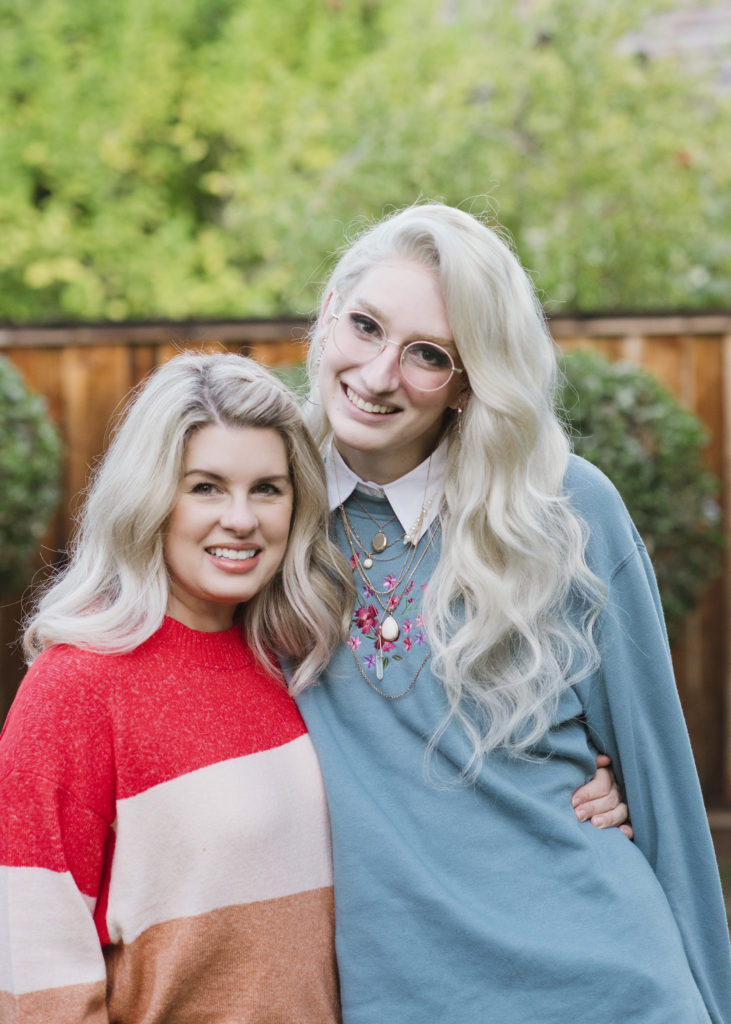
It’s been awhile since I’ve written anything personal here. I’ve spent the past four years serving on the board of Mama Dragons, a non-profit organization that supports, educates, and empowers mothers of LGBTQ kids. I’ve written a little about how my participation with Mama Dragons was key in parenting my Erik. It’s still a lifeline for me. The connections and friends I’ve made certainly helped when Erik came out a second time last September. She came out to herself and to us as transgender, something she’s known for a long time. Although I’ve only had a few months to wrap my head around this, I wanted to share a few things I’ve learned as the mother of a trans daughter, with the caveat that I’m no expert and am still learning something new everyday.
Gender identity is separate from sexual orientation
If someone is transgender, for example, many people automatically assume that they must also be gay. That, however, is not the case. Gender identity is the personal sense of one’s own gender. Gender can correlate with assigned sex at birth or can differ from it. Sexual orientation is who you feel attracted to. Erik identifies as a straight (trans) woman.
Being transgender (an adjective, not a noun or a verb) is not a mental illness
Unfortunately this idea is used in a dismissive, oppressive way towards the trans community. It is considered a “health condition,” only so trans individuals are able to access medical treatments they might choose to seek, such as hormone replacement therapy, so their body can align with their identity. Also unfortunate is the fact that many trans people experience higher levels of anxiety and depression than the general public due to family, peer, and the public’s rejection of them. The public is grossly undereducated on this topic which results in stressful social situations, which can certainly contribute to emotional distress. We have to do better about educating one another. And stop the stigmas.
There’s no one “right” way to be transgender
Some people choose to socially transition, meaning their outward appearance matches the gender they identify with. But not always. When Erik is home with us, she will often not wear her wig and give her scalp a break (as her hair grows out) and just wear comfy clothes. She’s still transgender regardless of her outward appearance. Some people choose to medically transition and that isn’t anyone’s business but their own. Just as you wouldn’t ask about your neighbor’s genitalia, the same applies to transgender people.
Names and pronouns
Some trans people choose to change their name if they feel that it no longer matches them or if they experience dysphoria around it. Others choose to keep their name. Erik is choosing to keep her name. Respecting and using prefered pronouns are also important. You would be irritated if someone kept using the wrong pronouns when referring to you. The same is true for trans folks. If you aren’t sure which pronouns to use, simply ask. “What are your pronouns? Mine are she/her.” If EVERYONE included their pronouns when introducing or representing themselves, trans people wouldn’t feel targeted or as conspicuous.
Transgender people who have families who are rejecting of their identity are more than 8 times more likely to attempt suicide than their cis-gender peers
Rejecting behaviors include refusing to using prefered pronouns, trying to change their identity, refusing to allow them to express themselves as the gender they identify with, speaking negatively about trans people, not allowing them to interact with trans peers, and punishing them for their identity in any way. I feel fortunate to have a family that supports Erik by using her pronouns, not treating her any differently than before she came out as trans, and being proud of having a trans sister/cousin/niece/daughter.
Changing your body to match how you feel inside isn’t uncommon
People do it everyday when they alter their appearance with plastic surgery, at the hair salon, at the tattoo parlor, at the tanning salon, at the gym, and through clothing. Imagine if society told you “you were born with brown hair, a flat chest, a fuzzy upper lip, and a stutter, and you aren’t allowed to change any of it.” That may be a poor analogy but it makes you think. Why is there such a stigma around gender?
Erik is still the person she was before she came out as transgender
She’s still a smartie and is a remote college sophomore this year. She bakes a ridiculously delicious cake. She’s a fantastic writer, writing the satirical section for her school’s student paper. Laundry is still not a priority. She and the dogs are still fans of one another. I still have to ask for her help when I attempt fake lashes – for the 25th time. Or when I need to reach something on the top shelf. She’s still a thoughtful and loyal friend to those lucky enough to be a part of her circle. In fact, she’s happier now that her physical appearance more closely matches her gender identity. As the mother of a trans daughter, that makes me happy.
If you happen to see her out and about, please be kind, smile, and let her know you see her. It can be a very scary thing to present yourself authentically in public if you appear at all different than what people are expecting. Especially the way the world is at the moment.
Please don’t hesitate to reach out if you have questions about my experience as the mother of a trans daughter. I may not have the answers but we can learn together.

